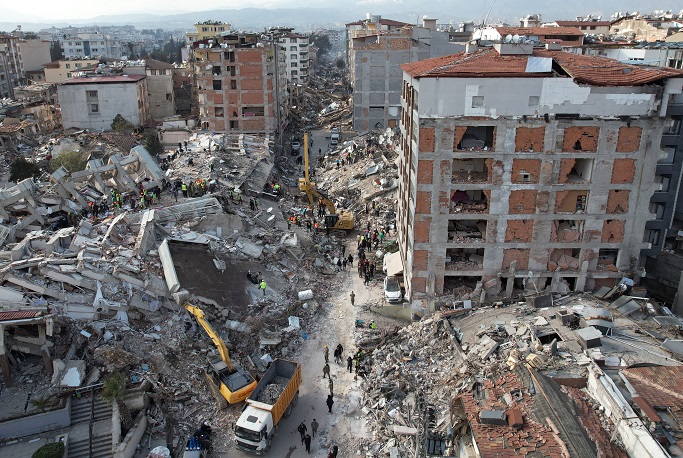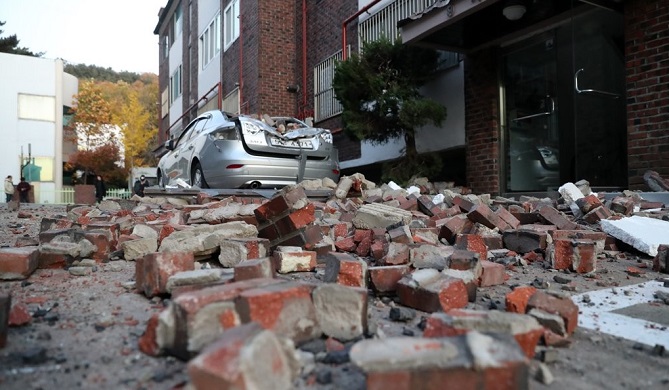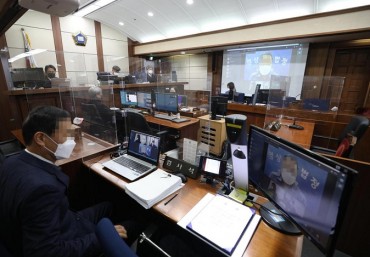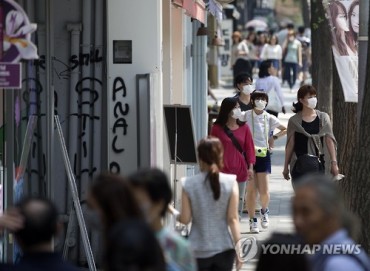
Destroyed buildings are seen in Antakya, southeastern Turkey, on Feb. 10, 2023, four days after a deadly 7.8 magnitude earthquake hit Turkey and Syria. (Yonhap)
SEOUL, Feb. 21 (Korea Bizwire) — Following the earthquake in Turkey, South Koreans are increasingly concerned about the safety of their homes and buildings.
The number of people seeking information on earthquake-resistant design at apartment management offices and online inquiry sites has spiked dramatically.
On internet forums where prospective residents discuss new apartment complexes, it is common to see inquiries asking about the safety rating of earthquake-resistant design in the building.
Some residents even leave inquiries on construction company websites to confirm whether their homes were designed to withstand earthquakes.
The “Simple Inquiry on Seismic Design of My House” website, launched by the Presidential Commission on Architecture Policy and the Architecture & Urban Research Institute (AURI) after the 2016 Gyeongju earthquake, has also seen a significant increase in users.
The site provides a service that checks whether earthquake-resistant construction is mandatory based on building register information.
Despite the limited information available on seismic design, the number of site users has surged.
According to data from the AURI, the total number of page views in the 47 days leading up to Feb. 16 was 1,044,214, which is double the total number of page views (535,805) from last year.

The aftermath of the Pohang earthquake that struck the southeastern port city on Nov. 16, 2017, the second strongest to hit the city in history. (Yonhap)
While the probability of an earthquake in Korea is lower than in Japan, the country is not immune to such disasters.
The Korean Peninsula is located within the Eurasian Plate, which experiences fewer earthquakes than the Trans-Pacific earthquake zone.
Since Korea’s first full-scale earthquake observation began in 1978, an average of 35 earthquakes have occurred annually, with only ten earthquakes of magnitude 5.0 or higher since then.
However, the problem lies in how well buildings can withstand earthquake waves. During the 2016 Gyeongju earthquake, high-rise buildings in Haeundae Ward, Busan, remained unscathed due to their earthquake-resistant design.
Although South Korea established earthquake-resistant design standards for buildings in 1988, it is unclear whether these standards were adequately applied to buildings built at that time.
As there was no precedent, earthquake-resistant design was still a relatively unfamiliar concept.
Experts predict that in the event of a massive earthquake like the one in Turkey, up to 80 percent of buildings in the city could collapse.
Lina Jang (linajang@koreabizwire.com)






